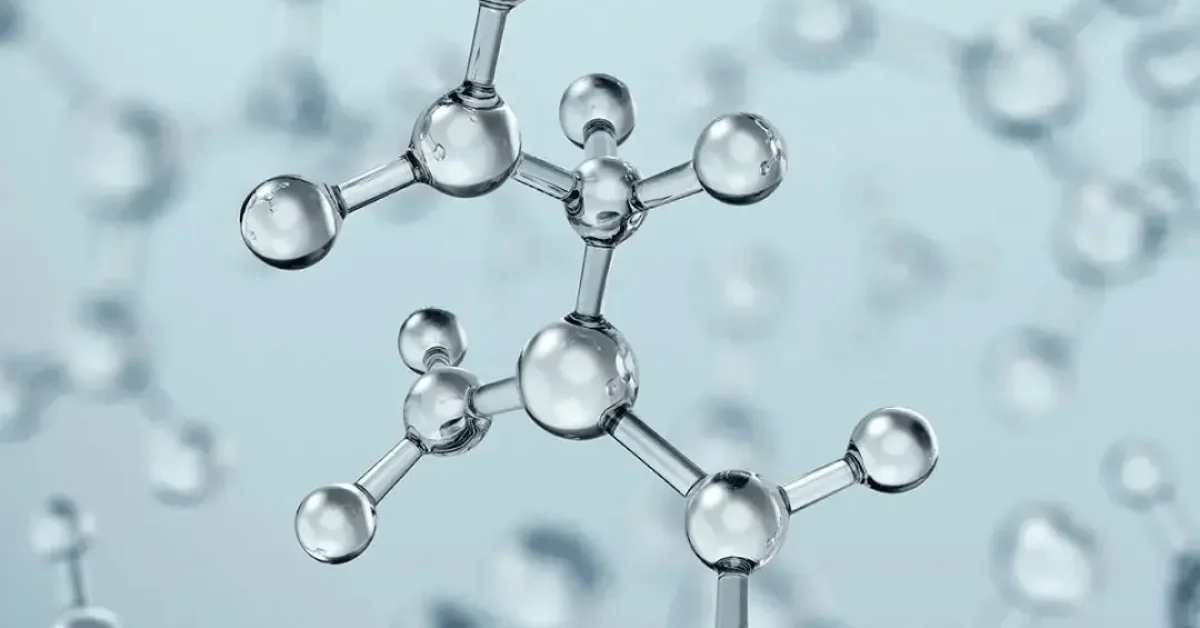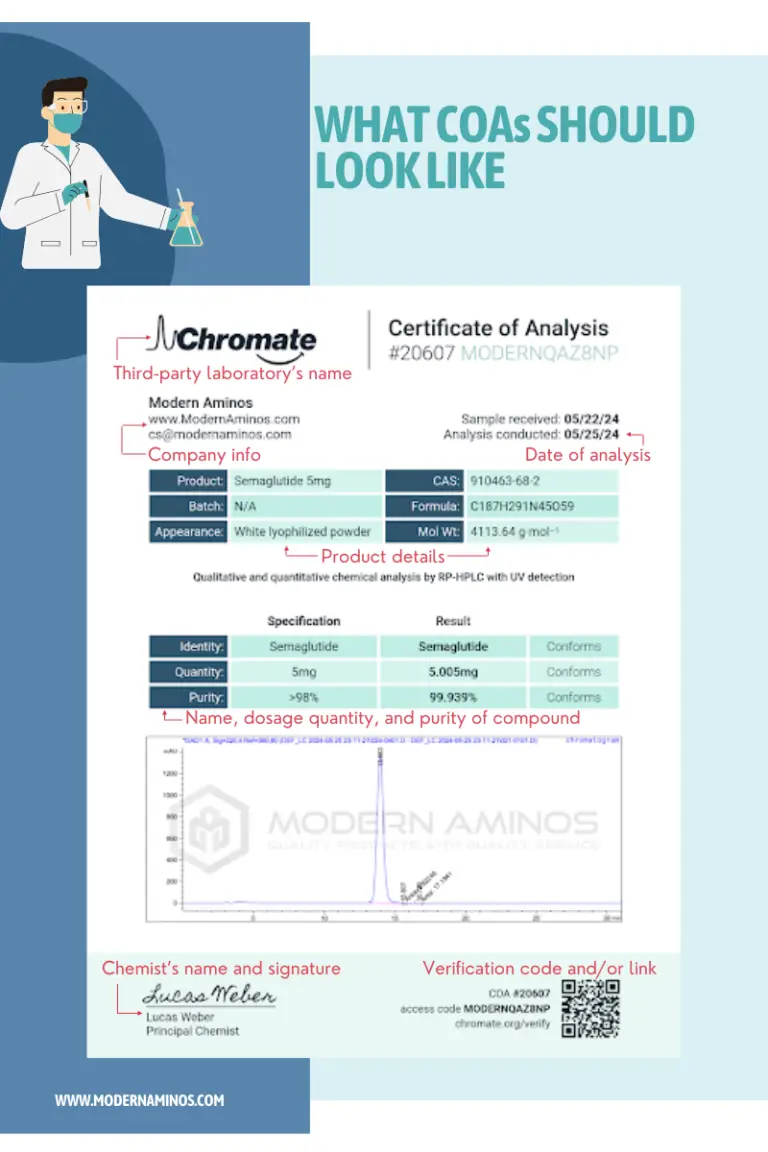
HPLC Testing, otherwise known as High Performance Liquid Chromatography, is a chromatographic technique used in pharmaceutical analysis used to identify the contents of a compound and their respective concentration in the sample submitted for testing.
HPLC Testing involves separating different constituents of a compound or mixture through high pressure to exert the solvents through the column.
HPLC testing involves the use of high pressure pumps, which push the sample through various solvents. This process is referred to as the mobile phase.
The sample enters a cylinder also known as the column, which is filled with solid particles made of absorbent materials.
Inside the column, the sample passes through and interacts with these absorbent materials to identify the components the sample is made up of.
Once the compounds reach the end of the column in varying retention times, UV detectors then pick up on their properties, which will show up on the chromatogram graph created.

Here at Modern Aminos we pride ourselves on delivering the highest quality research material possible for all your research needs. Above, you can see a sample of some of our latest testing we did on our product Sema.
We believe not only in fair pricing and excellent customer service, but also in actually delivering what we say we are going to deliver.
There have been many instances of companies in the research chem space selling under-dosed products or products that say they are one thing but are really another.
Of course, issues like this can have a massive negative impact on one’s research.
That is why we made it our mission to regularly and thoroughly test all of our products to ensure 3 main things:
Some of you may be curious and wonder why testing is even important. For the most part you may think, aren’t these brands actually selling what they say they are selling?
The unfortunate reality of our industry is that there are countless fake and under-dosed products that have plagued the market.
Such substandard products have even come from top brands, and brands that are fairly popular within the research chemical space.
The reality is that no matter what you hear about a company or how you feel about them, the ultimate test of product quality is the company’s transparency and willingness to regularly test their products.
Unfortunately though, simply posting test results does not mean that you are safe from getting poor-quality products, as some companies have turned to faking certificates of analysis or COAs to make it look like they have legit products when in reality they do not.
Let’s be clear: any company who fakes their testing results is NOT a trustworthy company and you should steer clear of them.
Sometimes companies will manipulate and Photoshop certificates in order to create fake results. Here’s how you can quickly and easily find out if they are fake:
Some of the most popular and reputable chemical analysis laboratories are Chromate and Janoshik. Fortunately, they have systems in place to confirm if they were the ones who actually did the testing. For example, Chromate’s COAs include details or a QR code (see the photo above) you can scan to verify the results directly through their website. Reputable labs will always provide ways to verify the test results.
Ideally, the dosage advertised should be within 10% of the dosage amount identified in the test.
HPLC testing results should come with unique codes that can be verified on the testing lab’s website.
If you attempt to type in a code and it does not exist on the testing website, then contact the lab for further info as you may be dealing with a fake COA.
Some COAs also come with a URL that links to a verification page on the lab’s website. This is another great way to verify if the products that were tested are actually legit or not.
While this is not always present, typically, COA test results should come with either a link to the website and/or a unique code.
If neither of these are present, it’s best to contact the lab that conducted the analysis to see if they can confirm that they indeed performed the test.
Many companies will only test their products once or twice and then never test their products again. The issue with this, of course, is that just because their results came back good once does not mean that they will always meet the standards.
While it may not be realistic to test every single product, updating tests every 4-6 months or when a new product arrives is the ideal practice to ensure that product quality is monitored.
The key point here is to make sure COAs aren’t 1 year or more past the test date.
Another common issue is that a company may have real test results, but they may not tell the full story. For example, some companies will only test for purity but not for concentration.
This means that the product may be clean and pure, but may not have the accurate amount of product that is claimed on its label.
Pure products are great, but misleading concentrations are not.
If a bottle claims to have 1mg of BPC-157 per capsule, but really only has 200mcg then this can negatively impact your research process even if the BPC is perfectly pure.
The research space can be challenging to navigate. Quality control issues are present in any and all industries and you may fall victim if you’re not careful.
This is why you should only source your research chems from companies who pride themselves on honest product quality through transparent testing.
Do not just stop at the testing though. Exercise due diligence — scrutinize and verify the COA results, and make sure that the test covers both purity and concentration, not just either one.
Here at Modern Aminos, we strive to always put out regular, extensive, and verifiable test results.
You can find all of our testing results here.
As you can see, our COAs:
If you have any further questions regarding our test results, you can send us an email at cs@modernaminos.com where we will be more than happy to answer all your testing-related questions.